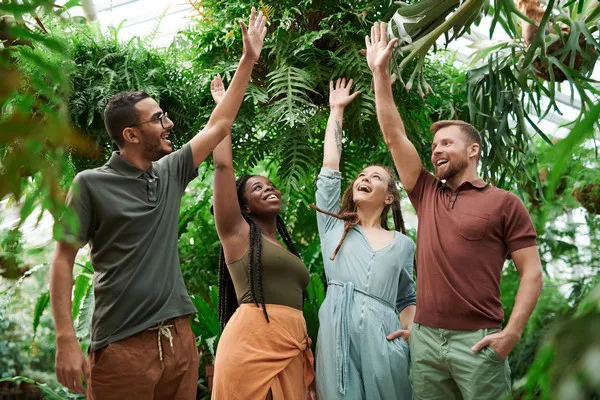Being in love is a profound human experience that transcends cultural boundaries and time. It is often described as a complex blend of emotions, thoughts, and behaviors that deeply connect individuals with another person. Explaining the nuances of being in love involves understanding its psychological, physiological, and social dimensions. This article explores the multifaceted nature of romantic love, the factors that contribute to it, and how individuals perceive and express this powerful emotion.
Defining Romantic Love
Romantic love is a deep emotional attachment and affectionate bond between two individuals. It is characterized by intense feelings of longing, desire, and emotional intimacy. Unlike other forms of love, such as familial or platonic love, romantic love typically involves a strong physical and sexual attraction alongside emotional connection.
Components of Romantic Love
1. Passion: Passion refers to the intense physical attraction and desire for closeness with the beloved. It includes both sexual desire and the longing for emotional intimacy and connection.
2. Intimacy: Intimacy involves the emotional closeness and connection between partners. It includes feelings of trust, vulnerability, and the ability to share personal thoughts and feelings openly.
3. Commitment: Commitment is the decision to maintain the relationship and work towards its long-term stability and growth. It involves dedication, loyalty, and the willingness to invest in the relationship’s future.
See Also: How to Be Happy in a Loveless Marriage?
The Triangular Theory of Love
Psychologist Robert Sternberg proposed the Triangular Theory of Love, which categorizes romantic love into three components:
Intimacy: Feelings of closeness, connectedness, and emotional bond.
Passion: Physical attraction, desire, and excitement.
Commitment: Decision to maintain the relationship and work towards its longevity.
According to Sternberg, different combinations of these components result in different types of love, such as:
Romantic Love: High in intimacy and passion.
Companionate Love: High in intimacy and commitment.
Fatuous Love: High in passion and commitment.
Consummate Love: High in all three components—intimacy, passion, and commitment.
Psychological and Neurological Aspects of Being in Love
The Role of Neurochemistry
Being in love triggers a complex interplay of neurochemicals in the brain that contribute to the experience of pleasure, bonding, and attachment:
Dopamine: Associated with feelings of reward and pleasure. It is released during romantic attraction and reinforces the desire for closeness and connection with the partner.
Oxytocin: Often referred to as the “love hormone” or “bonding hormone.” It is released during physical touch, intimacy, and orgasm, promoting attachment and trust between partners.
Serotonin: Regulates mood and emotional state. Low serotonin levels are associated with obsessive thoughts and behaviors, which can sometimes occur in the early stages of romantic love.
Psychological Theories of Love
Several psychological theories attempt to explain the development and maintenance of romantic love:
Attachment Theory: Developed by John Bowlby and Mary Ainsworth, attachment theory suggests that the quality of early attachment experiences with caregivers influences later romantic relationships. Secure attachment fosters trust, intimacy, and emotional security in adult relationships.
Theories of Attraction: These theories explore factors that contribute to initial attraction and partner selection, such as proximity, similarity, physical attractiveness, and personality traits.
Cognitive Theories: Cognitive theories focus on the role of thoughts, beliefs, and expectations in shaping romantic experiences and relationship satisfaction.
Cultural and Social Influences on Romantic Love
Romantic love is not only a psychological and physiological phenomenon but also deeply influenced by cultural and social norms:
Cultural Variations: Different cultures have varying norms and expectations regarding romantic love, marriage, and relationship dynamics. These cultural factors shape individuals’ attitudes and behaviors towards love and intimacy.
Social Construction: The concept of romantic love has evolved over time and is shaped by societal ideals, media portrayals, and interpersonal experiences. Social constructions of love influence how individuals perceive and express their romantic feelings.
Gender Differences: Research suggests that men and women may experience and express romantic love differently due to societal expectations and gender roles. These differences can impact relationship dynamics and communication styles.
Expressing and Communicating Romantic Love
Love Languages
Psychologist Gary Chapman introduced the concept of “love languages,” which categorizes how individuals prefer to give and receive love:
1. Words of Affirmation: Expressing love through verbal affirmations, compliments, and encouragement.
2. Acts of Service: Demonstrating love through helpful actions and gestures that benefit the partner.
3. Receiving Gifts: Showing love through thoughtful gifts and tokens of affection.
4. Quality Time: Spending focused and undivided attention with the partner.
5. Physical Touch: Communicating love through physical affection, such as hugs, kisses, and physical closeness.
Understanding each other’s love languages can enhance communication and deepen emotional connection in relationships.
Gestures and Behaviors
Expressions of romantic love can vary widely based on individual preferences and cultural norms:
Verbal Affirmations: Saying “I love you,” expressing admiration, and verbally acknowledging the partner’s positive qualities.
Physical Affection: Holding hands, kissing, cuddling, and engaging in sexual intimacy to convey love and desire.
Gift Giving: Surprising the partner with thoughtful gifts, flowers, or tokens of affection.
Quality Time: Spending meaningful and uninterrupted time together, engaging in shared activities, and creating memorable experiences.
Emotional Support and Understanding
Effective communication, active listening, and empathy are essential in expressing love and building emotional intimacy:
Open Communication: Sharing thoughts, feelings, and concerns openly and honestly with the partner.
Active Listening: Paying attention to the partner’s verbal and nonverbal cues, showing empathy, and validating their emotions.
Conflict Resolution: Resolving disagreements respectfully, compromising, and seeking mutually beneficial solutions to strengthen the relationship.
Challenges and Evolution of Romantic Love
Challenges in Romantic Relationships
Despite its many rewards, romantic love can also face challenges that require understanding, patience, and effort to overcome:
Communication Issues: Misunderstandings, differences in communication styles, and lack of effective communication can strain relationships.
Conflict and Disagreements: Differences in values, goals, and expectations may lead to conflicts that require negotiation and compromise.
External Stressors: External factors such as work stress, financial pressures, and family obligations can impact relationship dynamics and emotional connection.
Evolution of Love Over Time
Romantic love evolves as relationships progress and individuals grow personally and emotionally:
Transition from Passion to Companionate Love: The initial intense passion often gives way to a deeper, more stable form of love characterized by emotional intimacy and commitment.
Long-Term Relationship Dynamics: Maintaining love and connection requires ongoing effort, mutual respect, and adapting to life changes together.
Renewal of Romance: Couples can renew and strengthen their romantic bond through shared experiences, continued expressions of love, and nurturing the emotional connection.
Conclusion
Being in love is a multifaceted experience that encompasses emotional intensity, physical attraction, and deep interpersonal connection. Understanding the psychological, neurological, and social dimensions of romantic love provides insights into its development, expression, and challenges within relationships. By exploring the factors that contribute to romantic love and strategies for nurturing it, individuals can cultivate meaningful and fulfilling relationships that endure over time. Ultimately, being in love enriches life, fosters personal growth, and contributes to overall happiness and well-being.
Related topics:



















